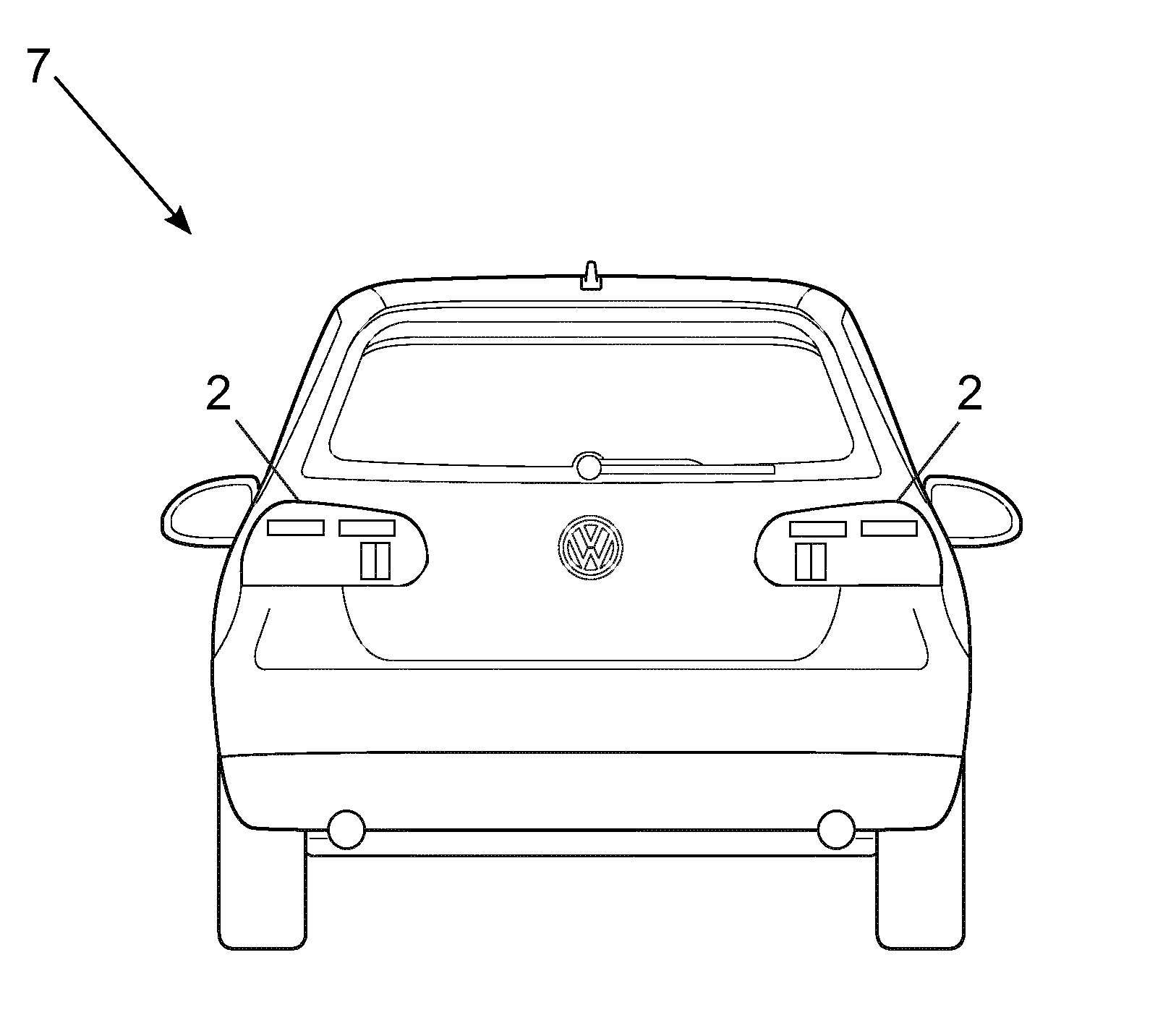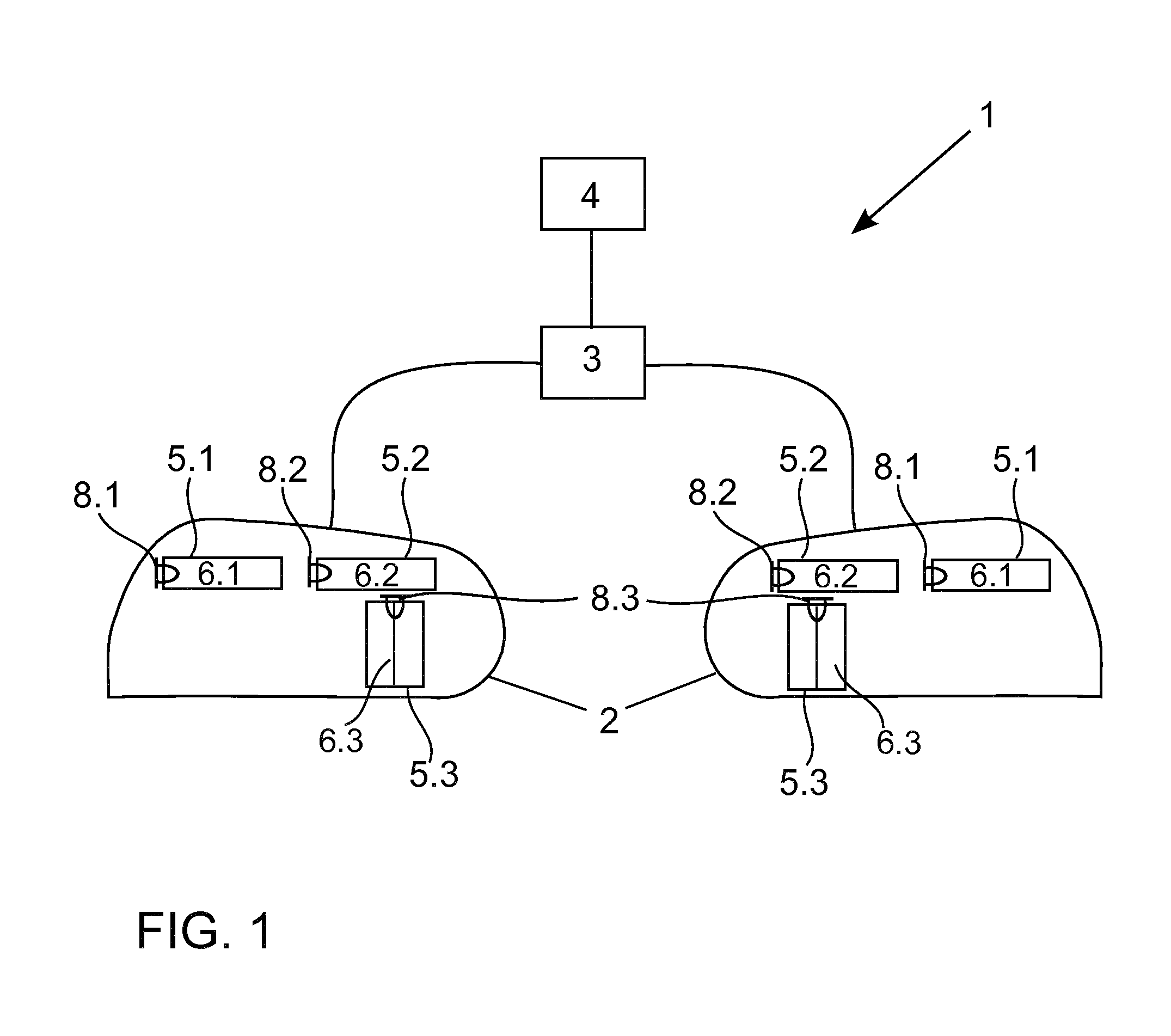Method and device for controlling the light emission of a rear light of a vehicle
- Summary
- Abstract
- Description
- Claims
- Application Information
AI Technical Summary
Benefits of technology
Problems solved by technology
Method used
Image
Examples
Embodiment Construction
[0036]An exemplary embodiment of device 1 of the invention is described with reference to FIG. 1.
[0037]Device 1 of the invention comprises two rear lights 2, which in turn comprise a plurality of optical components 5 and 8. Optical components 5 and 8 comprise optical fibers 5 and LEDs 8. LEDs 8 couple light into optical fibers 5. The decoupling surfaces of optical fibers 5 function as emitting surfaces 6 of rear lights 2. Emitting surface 6 is divided into three partial emitting surfaces 6.1, 6.2, and 6.3. Optical components 5 are arranged furthermore so that partial emitting surfaces 6.1 and 6.2 of optical fibers 5.1 and 5.2 emit light as horizontal lines. Partial emitting surface 6.3, in contrast, is arranged so that it emits light as a vertical line. Partial emitting surfaces 6.1 and 6.2 are therefore perpendicular to partial emitting surface 6.3. Partial emitting surfaces 6.1, 6.2, and 6.3 further are arranged separately from one another; therefore they are not in contact.
[0038]...
PUM
 Login to View More
Login to View More Abstract
Description
Claims
Application Information
 Login to View More
Login to View More - R&D
- Intellectual Property
- Life Sciences
- Materials
- Tech Scout
- Unparalleled Data Quality
- Higher Quality Content
- 60% Fewer Hallucinations
Browse by: Latest US Patents, China's latest patents, Technical Efficacy Thesaurus, Application Domain, Technology Topic, Popular Technical Reports.
© 2025 PatSnap. All rights reserved.Legal|Privacy policy|Modern Slavery Act Transparency Statement|Sitemap|About US| Contact US: help@patsnap.com



